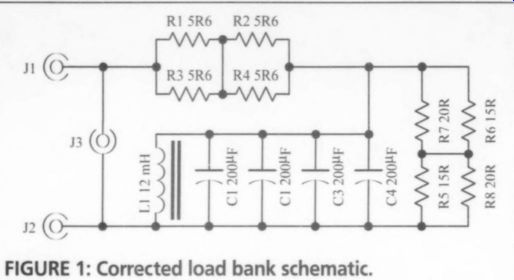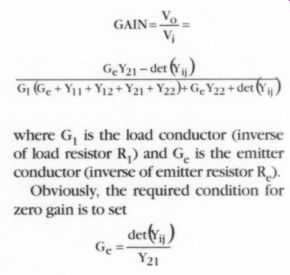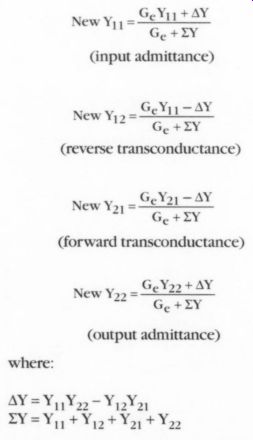OP AMP IMPROVEMENTS
I have been unable to find the information I need in previous issues of Audio Electronics (or The Audio Amateur). My 24dB/octave Linkwitz/Riley crossover uses TLO74 (quad) and TLO72 (dual) ICs.
I am seeking a pin-for-pin replacement with improved characteristics. Would the AD713 suffice, or is there another IC anyone would recommend? Same question with respect to theMC33078.
Frank S. Thomas III; Ballwin, MO
Walt Jung Responds:
Mr. Thomas raises a most interesting question regarding the upgrading of older audio circuitry with pin-for-pin improvements, because there are lots of such op amps around. Moreover, if one is willing to expand horizons a bit, lots more can be done beyond basic chip-swapping.
First, to answer the question of whether the AD713 will sub for the TLO74 (or the AD712 for the TLO72), the answer is yes, they certainly will. It is worth noting that the AD711, AD712 and AD713 data sheets all have active filter application examples. All of these parts have FET inputs, and are generally comparable in terms of speed and noise. The MC33079 (quad) and 33078 (dual) family are also pin-for-pin substitutes, but offer lower noise and greater band width, vis-a-vis the FET devices. Offering generally comparable performance to the MC33078 is the OP275 from ADI. Whether or not the lower noise/higher bandwidth of these devices would be a big advantage in your crossover I can't say, since the answer depends upon the impedances around it and the gain of the circuit. Both the MC and OP devices are different from the FET devices mentioned, employing bipolar transistor front ends. While this affords lower noise (which may be seen after their substitution), the higher bias current could be a possible disadvantage with high circuit impedances.
A FET family I have had good audio success with over the last few years is the AD823 dual op amp (a similar topology is also found in the AD824 quad). These are FET input devices, built on a complementary IC process. This means their bipolar NPN and PNP transistors have comparable speeds and gains for greater op amp linearity, a factor not present with the earlier FET parts.
Not to dampen your upgrade parade, but there are some important basic points that should be made about multiple IC audio op amp devices. Because of basic-package power limitations, manufacturers are forced to cut back on the available power from a given op amp in such a multiple package, versus that of a single part. Thus while quads (and duals to a lesser extent) offer great circuit density, they will lag somewhat in all-out performance (particularly with regard to drive) compared to a comparable-circuit single IC. Also, crosstalk be tween channels simply doesn't exist in single devices, but it is possible with multiples. This depends upon the devices of course, plus the loading. So, while you could replace say your TLO74s with a pair of OP275s, you'd be even better off with 4 OP176s (OP275-type single op amp). I'll leave it to you to decide if you want to kludge up 4 single DIP ICs on a 14-pin header.
If all of that sounds pessimistic, you can hedge your bets on what stages of your filters to go all-out, perhaps using the gutsiest chips for the line-out spots. Worthwhile here is the AD817 single (or AD826 dual) with typical output cur rents of about 100mA, and ability to drive capacitive loads (such as interconnects) without instability.
You might also investigate on the web audio upgrade companies, some of which offer plug-in DIP IC compatible modules. One such company is LC Audio, offering dual modules adapting the SOIC-only AD825 to standard DIP foot prints (lcaudio.com/ad825.htm). I can't say whether their "Type 1" dual-module will work in your filters, not having seen one first-hand. But, I can heartily do so for the AD825 op amp itself. This single FET input IC is a worthwhile improvement over many op amps for audio. Some of the engineering reasons behind its unique-for-audio virtues are discussed in reference 3 below. If you can over come the physical problems of adapting it into a DIP-style footprint, I suspect you'll find it worth investigating.
Of course, audiophiles will always continue to swap op amps and just listen to their results, and personal favorites will emerge. In spite of that fact, I feel strongly that other environment related factors can sometimes make as much difference to bottom-line performance as the actual IC device. Given that, such things as op-amp output drive/load linearity and system power-supply regulation should be considered whenever possible, if the very best results are sought. While you may not be able to relay out your present circuit board for fully buffered op amp stages, you might consider such, on the next go-round. Right now you might also consider using the best possible power supply regulators on your crossover, since this is more likely to be physically possible.
Given all of the above, my personal choice for an active filter, Sallen-Key suitable op-amp topology actually turns out to be a composite amplifier. This is a circuit functionally equivalent to one op amp, actually employing two physically separate ICs, each optimally selected for its input or output task. By definition, this technique eliminates the thermal distortion effects which plague many single ICs when loaded heavily (even some of those often touted for audio). The design I'm using currently has a fast FET input IC as a linear "front-end," followed by a very high current-output, current:
feedback type op amp as an output stage. This stage runs at unity gain, with the ability to drive various loads without impacting distortion. It is an evolution of the AD744/AD811 composite I described in 744 2/92, in "High Performance Audio Stages Using Transimpedance Amplifiers." The whole thing works great for me, but unfortunately, it is likely to be of little help to anyone looking for a simple drop-in dual or quad op-amp replacement.
As further background on this topic, I did a series of Electronic Design articles on audio circuit improvement related to applying op amps effectively, which can be found at the URLs listed below. Various distortions, buffering tricks, and composite amp designs are part of the discussions. Good luck with the crossover up grades, and I trust you'll have better sound in the end!
Walt Jung
Analog Devices
Walt's audio op amp improvement series:
#1 is http://devel.penton.com/ed/Pages magpages/sept0198/tt/0901tt.htm
#2 is http://devel.penton.com/ed/Pages/ magpages/oct0198/tt/1001tt.htm
#3 is http://devel.penton.com/ed/Pages magpages/dec0198/tt/1201tt.htm
#4 is http://devel.penton.com/ed/Pages magpages/dec1498/tt/1214tt. htm
TIMELY

FIGURE 1: Corrected load bank schematic.
I read with interest Erland Unruh's test of the Superclock (AE 6/99, p. 42). I appreciated it for several reasons: his tests used "normal" equipment, not some esoteric gear no body else has. He refrained from making absolute statements, but clearly indicated the limits on the tests. This made it much more trustworthy, in contrast with some re- views that give the impression the reviewer has exclusive access to the truth.
Yes, he was opinionated, but aren't we all, including the manufacturer.
There was no indication that Erland'spersonal opinion influenced his final conclusions. All in all, this was a review that relates very well to the average audiophile and his resources.
In contrast, I was disappointed with the reaction of the manufacturer. If you need to resort to stating that a trimmer cap is not a variable cap, you apparently have nothing of substance to report. If the manufacturer had evidence to the contrary of Erland's findings, why didn't he say so? Yes, the outcome of Erland's experiments were not conclusive, but they were certainly helpful. The review did, at least to this reader, provide a lot of useful information. I hope to see more re views of this type. Well done, Erland! Jan Didden Hoensbroek, Netherlands Erland Unruh responds:
I would like to thank Jan Didden for his positive feedback on the review. I agree 100% with the comments and also hope to see more of these types of investigating reviews. With some luck we can also look forward to more constructive response from manufacturers. Even if the response wasn't constructive this time, it was quite revealing.
CORRECTED LOAD
There is an error in Fig. 5 of Charles Hansen's "Passive Loads for Audio Testing" (AE 1/00, p. 37). The line from R2/R4 should connect to the other side of the capacitor bank as shown in Fig. 1.
Fred Gloeckler Woodbridge, VA LPTOCD I don't know whether what I am trying to do is actually possible. I wish to record an old vinyl LP to CD from the headphone socket on my hi-fi into my PC as a wave file via the line input on my sound card.

FIGURE 2: Section of correct MOSFET circuit.
So far I have had no joy, as every time I try to record there appears to be too much power (not volume). Is there a modification I can make to the lead to re duce this power output? I realize that the best way would be to use a "line out" from a hi-fi, but unfortunately my hi-fi does not have a line out.
Dave Cass
Ipswich IP1 2H Q UK
Charles Hansen responds:
The headphone output is not a very good place to tap a signal, especially from consumer audio gear. The headphone output of most consumer receivers is simply a power resistor in series with the speaker terminals. Since you are at the end of the amplification chain, the noise level and distortion are at their highest.
As you have noted, the signal level is also very high, with too much voltage that will over load the analog input of your sound card. With only 1W of output power into 8C2, the voltage to the sound card will be 2.83V RMS. The maximum specified output (0dB) from a CD player is 2V RMS.
Your receiver should have a line-level output at its tape monitor loop. Look for TAPE OUT or TAPE REC output jacks, which have a lower signal level of 250-500mV at rated sensitivity, and should prove compatible with your compute sound card's line input. The tape loop signal is fixed and independent of the receiver's volume control setting. If the level is still too high, you can insert a dual 10k audio volume control such as the Mouser 313-2420-10K, between the receiver and sound card.
My other concern is the quality of your phono section. Most consumer receivers use a single op amp for the phono preamp, which is usually a highly compromised design. If you plan to transfer a lot of vinyl to audio CDs, you may choose to consider building a dedicate phono preamp unit. Many excellent designs have been published in Audio Electronics and The Audio Amateur over the years. If you are making transfers to rip to MP3 however, your receiver's phono circuit may be good enough.
UPDATE
In reading my article, "A Hybrid Tube/MOSFET SE Amp," AE 2/00, 1 found a small but important error. In the amplifier schematic, (Fig. 2, p. 10), the collector and emitter of Q1 and Q2 are interchanged. In both Q1 and Q2 transistors, the arrow must go from up to down (see Fig. 2).
Generoso Cozza Banchette, Italy
FEEDBACK
I have very much enjoyed the three articles on audio power amplifier distortion by Douglas Self (AE 2-4/99). Mr. Self obviously has a tremendous depth of knowledge and keen insight on this topic. I was particularly interested in his treatment of the feedback blocking capacitor in Part 3 of the series. Would Mr. Self please comment on the alternative method of dealing with this capacitor published in "On Power Amplifier Feed back Networks" (TAA 1/96, p. 12)?
Richard Guest; Toronto, Canada
Douglas Self responds:
The alternative feedback scheme certainly appears to be workable; at any rate it works in SPICE simulation, though I have not tried it for real. However, I found that to get a suitably low LF rolloff with typical resistor values, the capacitor was 10pF, which still means an electrolytic, though a physically smaller one. I am not sure this gets us much further forward.
MISLEADING
I have a complaint, a pet peeve of mine.
Several of your authors are perpetuating the misinformation that the common mode gain of a differential amplifier is proportional to the ratio of the load resistor to the tail resistor. I have seen this same misinformation stated in text books. If this were correct, then to obtain zero common-mode gain, or, equivalently, infinite common-mode rejection, either the load resistor must be zero or the tail resistor must be infinite. This is, of course, impractical and also incorrect.
Using Y-parameter notation, the gain of an amplifier is given by the following formula:
V, GAIN=-2= Vi GY) - det \) Gy (Ge + Y11 + Yi2+ Y21 + Y22 + GYap + det {Yi where G, is the load conductor (inverse of load resistor R)) and G,, is the emitter conductor (inverse of emitter resistor R).
Obviously, the required condition for zero gain is to set Je Y2) in the numerator. Notice that this is a null type of condition and for values of G, larger or smaller than this value, the gain increases from zero. Also note that the value of G, is immaterial.
When converted to common emitter H parameters, the condition for zero gain turns out to be G, = H,,/H,, or equivalently, R.=R xB. R is the transistor output resistance and J is the transistor current gain.
For a small signal transistor at 1mA collector current, R is on the order of 100k ohm, and B is on the order of 100. The emitter resistor R,. is then on the order of 10M, large but definitely not infinite (Fig. 3).
We Want Your Feedback!
Audio Electronics encourages reader feedback in the form of letters, queries, and comments.
Audio Electronics reserves the right to edit letters for length and Re or Ge
Your authors are using the approximation that the gain of an amplifier equals the ratio of the load resistor to the unby passed emitter resistor. According to the approximation, the gain of an amplifier is given by this formula
GAIN="Yo _ RL _ GE Vi Bg GG
which is obviously incorrect when compared to the exact formula above. This approximation fails to account for the fact that the emitter or source resistor alters the Y-parameters of the active device.


Accounting for the emitter or source resistor (conductor in this case because we are using admittance parameters), the new Y-parameters are given by:
New Y y= GeYy 1+ AY Ge +ZY (input admittance)
New Yj» = GeY11 -AY Ge +XZY (reverse transconductance)
GeYz1 -AY ade da Cc (forward transconductance)
GeYap +AY New Voz ==Peay | (output admittance) where:
--------
It is obvious that the forward transconductance, Y,;, can be reduced to zero by the correct value of emitter or source resistor, and the amplifier will have no gain. The load resistor doesn't even matter.
Raymond A. Futrell Great Falls, VA
+++++++++++++
HELP WANTED
I am trying to find out the input impedance for a Hafler DH 220 amplifier. I need to know so that I can properly set the crossover for a V andy subwoofer.
Any help is most appreciated.
Readers with information about this topic are encouraged to respond directly to the letter writer at the address provided-Eds.
READER-submitted TIPS
Audio Electronics offers readers the opportunity to share their knowledge and experience and show off their handiwork. If you're an audio enthusiast, then you probably have information to pass along to readers.
You may not think it's significant, but let us be the judge of that.
You may have solved a particular system design problem. Or a construction trick.
Or a clever circuit modification. Tell us your latest audio construction adventure.
Your experience could help others.
Chances are, if you've faced the problem then others have too. We're looking for what you've experienced.
Contribute to the wealth of information in this industry. Involved readers like you en sure that this industry will prosper. And we're willing to pay you a modest stipend for your efforts.
At the same time, you'll be putting a few bucks into your pocket, but, most of all, you'll become an active part of the audiophile community. Your work will be read by thousands of others. Remember, it's your magazine, and your contribution can make it even better.
Send your entries to:
Also see: